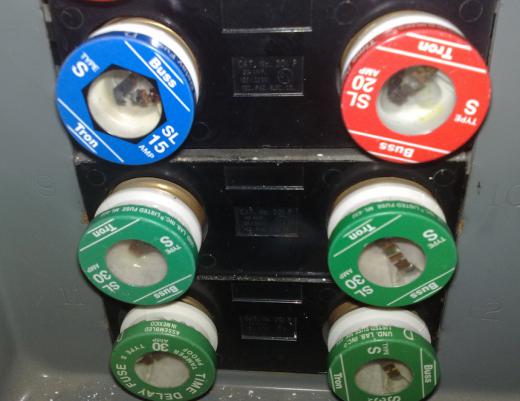A ring circuit is a power distribution wiring method that sees each phase or line bridged from point to point across a number of outlets and eventually arriving back on the same fuse, circuit breaker, or bus connector it originated from. The ring circuit is most commonly used to wire single phase installation but may also found in three phase power supplies. Also known as a ring main or ring feed, the ring circuit originated in the United Kingdom in response to the serious copper shortages experienced after World War II. This method of wiring allowed smaller quantities of lighter gauge wiring to be used and also saved on labor. Unlimited numbers of outlets may be included in ring circuits with the only limitation being the total floor area served.
Conventional domestic radial circuit wiring consists of live, neutral, and ground lines which are fed out of the consumer unit (CU) or distribution board (DB) to a number of outlets. Once these lines reach the outlets, they are simply bridged from one to the other until all outlets have a live neutral and ground connection. The total number of outlets on any given circuit depends on the capacity of the circuit breaker or fuse they originate from and their cumulative amperage ratings. Ring circuit wiring, on the other hand, features live, neutral, and ground lines which are fed to a number of outlets and then return to the circuit breaker or fuse of origin, thereby forming an unbroken ring.

This style of wiring originated in Britain in response to calls for savings on copper usage due to the critical shortages of the metal following WW II. Wiring domestic circuits in this fashion offered the benefit of lighter gauge wiring requirements and significant labor savings. Having domestic circuits ring wired also meant that if one “leg” of the ring failed, the other would still be able to carry a fair portion of the load. At the same time, the older, round pin plugs were replaced with fuse top, flat pin types which required less copper to manufacture.

In most domestic installations it was, and still is, common practice to wire each floor of the building with its own ring circuit and with the kitchen on a separate circuit. While radial circuits feature a finite number of outlets they may support, ring circuits may feed any number of outlets with the only restraint being the total floor area fed by the circuit which is generally 100 m2 (1076 square feet). Should additional outlets be required on an existing ring circuit, the new additions are typically added by means of installing a “spur,” which is simply a parallel extension from the nearest existing outlet. One of the disadvantages of ring circuits is their low over current tolerance and the difficulty experience in fault finding and balancing loads correctly. The multiple number of outlets involved also means ring fed circuit breakers are usually large and with the average being 30–32A.
